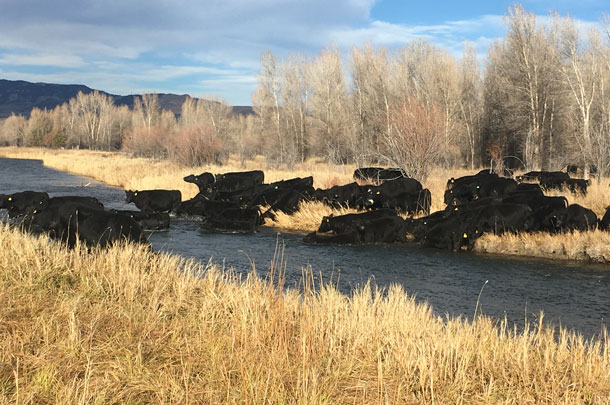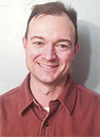For those of us who live in low-precipitation bands (10-12 inches per year is normal here) early season pasture management can make or break us. Unfortunately, it’s also the time of year when many stockmen kick the cattle out, turn their back on them for a few weeks and put on their farmer hat and start planting, irrigating and getting ready to harvest hay crops.
As our nation’s cow-calf producers seem intent on continuing their slow march to financial death to feed their addiction to hay and high-input production models, enormous amounts of money, animal performance, grass and cheap nutrition are left to waste in the pastures. Stocking rate has long been proven to be one of the greatest drivers of profit in grazing systems, and the less we manage our pastures, the lower the stocking rate needs to be to compensate for the reduced efficiency of continuous grazing.
As we fall prey to the convenience of continuous grazing and fire up Big Green to go play hay farmer, we continue to burn more fuel, pay more for repairs, graze fewer cattle and decrease profit margins a little more each year. In many instances, ranchers lose up to 25% of their annual grass production to trampling losses and selective grazing that occurs in continuous grazing systems. What could you do with 25% more grass to utilize? Wouldn’t it be worth managing pastures a little more to save 25% (or more in many cases)?
I often hear people say they just don’t have time to move cattle frequently and manage pastures, but consider the financial value of being able to utilize 25% more of your forage:
1. As cattle get trained to more frequent moves, the moves take less time.
2. As you find your own little tricks to make electric fencing faster and easier, time input goes down as well.
3. The more your eyes are on the cattle, the quicker you catch costly sickness, lame bulls, etc.
4. If you could utilize 25% more grass, your grazing season could be extended, and you would need less supplemental hay, which means hay acres could be converted to pasture for an even greater extension to your grazing season. The reality is, year-round grazing is achievable in most areas of the continental U.S. with a little ingenuity and forward planning. A good goal is to work toward shortening your feeding period by one month each year until you no longer feed (except maybe a couple of days a week for protein needs).
5. Have you ever actually made a grazing plan to forecast and measure your forage availability, time and labor inputs, animal performance and returns on your management? The reality is, most people haven’t. If you haven’t taken this step, I would encourage you to do so; otherwise, you have no basis to measure progress or a basis to argue against making a change.
6. The faster the grass grows, the faster cattle need to be moved. In early spring, you may find yourself moving daily or every two to three days. It may sound like a big undertaking, but electric fences allow for easy manipulation of grazing areas, and cattle quickly begin to look forward to moving as they know the feed will be better in the next pasture. Benefits to this are that cattle are on the best feed constantly, which reduces or eliminates supplementation and increases their ability to rebreed due to the quality of feed they are grazing.
7. Frequent moves keep grass in a vegetative state longer, thus having a similar effect to extending the growing season. Now you have the benefit of better feed, more feed, lower (or no) supplementation costs during the growing season, an extended grazing season and a reduced winter hay need. A win all the way around.

8. Frequent moves with more rest before returning to a pasture helps break the fly and parasite cycle. Now we have reduced costs of fly control and increased animal performance as a double benefit.
9. As the summer progresses and grass growth slows, reduce frequency of moves and begin stockpiling fall and winter grass. Usually, stockpiling needs to start 90 days before the end of the growing season. This time of year happens to coincide with harvest times for many crops, leaving you some extra time available to drive Big Green in circles for hours at a time.
10. Managing stockpiled fall and winter forage rather than continuous grazing will keep cattle on a higher nutritional plain further into the winter, allowing for decreased spending on supplementation. What you do in the spring with your pastures will determine what they look like in the winter.
Novels can, and have been, written about the benefits to land, animals, and your bottom line with better grazing management – to adequately summarize all the available information on the topic would take more than a short article. Some great books to read this summer while taking advantage of Big Green’s GPS steering would include Kick the Hay Habit by Jim Gerrish and Comeback Farms by Greg Judy, or check out some resources available from the Noble Research Institute to get you started. ![]()
PHOTO 1: Frequent rotations during the growing season keep grass vegetative longer and at a higher plain of nutrition. Photos by Billy Whitehurst.
PHOTO 2: Abundant fall and winter grass is the result of proper planning and management during the growing season.

-
Billy Whitehurst
- Makale Livestock
- Whitehall, Montana
- Email Billy Whitehurst









